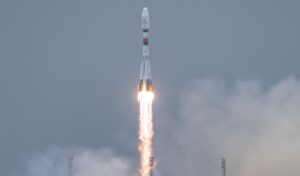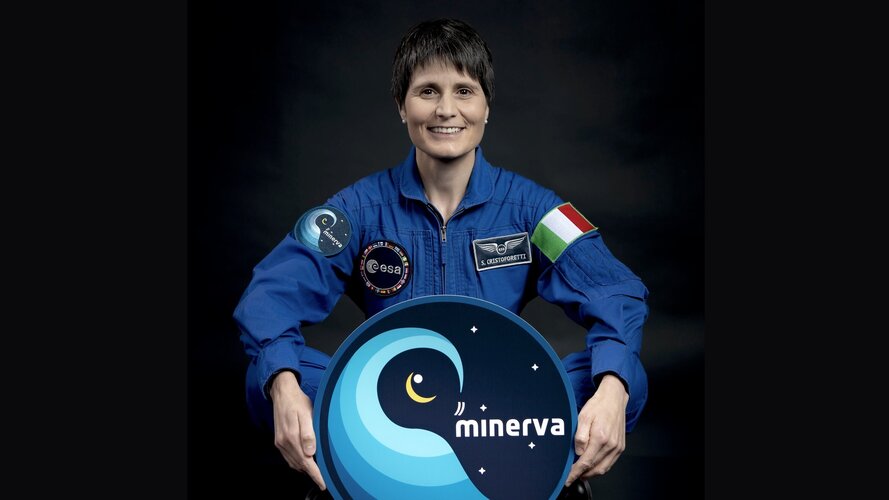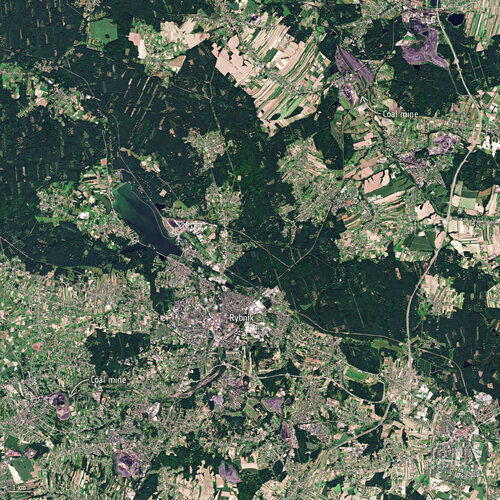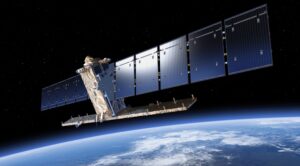Micro-geostationary satellite enters design phase
Tuesday, 22 March 2022 07:27
A small but powerful European telecommunications satellite – the first of a series – is to be developed under a contract signed between ESA and SWISSto12, an innovative company based in Renens, Switzerland.
SES to acquire Leonardo DRS satcom business for $450 million
Tuesday, 22 March 2022 07:16
Leonardo DRS, a provider of satellite communications services to the U.S. government, announced March 22 it is selling its satcom business to satellite operator SES in a $450 million deal.
The post SES to acquire Leonardo DRS satcom business for $450 million appeared first on SpaceNews.
Lockheed Martin to launch new satellite bus aimed at mid-size market
Monday, 21 March 2022 22:22
Lockheed Martin plans to launch to orbit later this year a new satellite bus the company designed for both the commercial and government markets.
The post Lockheed Martin to launch new satellite bus aimed at mid-size market appeared first on SpaceNews.
E-Space taps Rocket Lab to launch three demo sats by July
Monday, 21 March 2022 21:27
Rwanda-backed megaconstellation startup E-Space said March 21 it has contracted Rocket Lab to launch three demo satellites in the second quarter of this year.
The post E-Space taps Rocket Lab to launch three demo sats by July appeared first on SpaceNews.
SpaceX severs ties with longtime partner Spaceflight Inc.
Monday, 21 March 2022 20:56
SpaceX is severing ties with launch integrator Spaceflight Inc. after years of working closely together, a move that has surprised Spaceflight.
The post SpaceX severs ties with longtime partner Spaceflight Inc.
Satellite operator OneWeb switches launches to SpaceX
Monday, 21 March 2022 20:35 Global satellite communications company OneWeb said Monday that it will switch launches to Elon Musk's SpaceX, after suspending activities with Russia's Baikonur Cosmodrome in Kazakhstan.
"OneWeb... announced today that the company and SpaceX entered into an agreement that will enable OneWeb to resume satellite launches," OneWeb said in a brief statement.
The terms of the agreement remai
Global satellite communications company OneWeb said Monday that it will switch launches to Elon Musk's SpaceX, after suspending activities with Russia's Baikonur Cosmodrome in Kazakhstan.
"OneWeb... announced today that the company and SpaceX entered into an agreement that will enable OneWeb to resume satellite launches," OneWeb said in a brief statement.
The terms of the agreement remai Focus for early-stage space companies turning to workforce challenges
Monday, 21 March 2022 20:03
Attracting and retaining talent is becoming a bigger concern for the space industry than securing investments, according to early-stage space investors speaking at the Satellite 2022 trade show here.
The post Focus for early-stage space companies turning to workforce challenges appeared first on SpaceNews.
Industry proposals sought for ‘cislunar highway patrol’ satellite
Monday, 21 March 2022 19:40
The Air Force Research Laboratory is asking companies to submit ideas on how they would design a spacecraft to monitor outer space beyond Earth’s orbit.
The post Industry proposals sought for ‘cislunar highway patrol’ satellite appeared first on SpaceNews.
Cosmic milestone: NASA confirms 5,000 exoplanets
Monday, 21 March 2022 18:03
The count of confirmed exoplanets has just ticked past the 5,000 mark, representing a 30-year journey of discovery led by NASA space telescopes.
Not so long ago, we lived in a universe with only a small number of known planets, all of them orbiting our sun. But a new raft of discoveries marks a scientific high point: More than 5,000 planets are now confirmed to exist beyond our solar system.
Starlink reaches 250,000 subscribers as it targets aviation and other markets
Monday, 21 March 2022 16:22
SpaceX now has a quarter of a million subscribers for its Starlink satellite broadband service as it looks to move into new markets like aviation.
The post Starlink reaches 250,000 subscribers as it targets aviation and other markets appeared first on SpaceNews.
As pandemic abates, war and inflation raise new issues for satellite industry
Monday, 21 March 2022 16:09
Two years into the pandemic, satellite production delays underline continuing uncertainty around COVID-19’s lingering effect on the space industry.
The post As pandemic abates, war and inflation raise new issues for satellite industry appeared first on SpaceNews.
OneWeb reaches launch deal with SpaceX
Monday, 21 March 2022 12:36
OneWeb did not disclose how soon its SpaceX launch would happen, how many satellites it would deploy, which SpaceX launch vehicle would be used, or whether the deal includes more than one launch.
The post OneWeb reaches launch deal with SpaceX appeared first on SpaceNews.
Samantha’s second space mission: Minerva
Monday, 21 March 2022 12:00 Video:
00:04:15
Video:
00:04:15
ESA astronaut Samantha Cristoforetti will return to the International Space Station in April 2022. Her second space mission is known as Minerva.
Inspired by Roman mythology, Samantha says the Minerva mission name and patch pay homage to the competence and sophisticated craftmanship of all those who make human spaceflight possible.
Samantha will travel to the Station alongside NASA astronauts Kjell Lindgren, Bob “Farmer” Hines and Jessica Watkins. Collectively known as Crew-4, the astronauts will be launched from NASA’s Kennedy Space Center in Florida, USA, on a SpaceX Crew Dragon spacecraft.
When Samantha arrives at the Station, her Minerva mission officially
Methane detected over Poland’s coal mines
Monday, 21 March 2022 10:30
Data from the Tropomi instrument onboard the Copernicus Sentinel-5P satellite has been used to detect methane plumes over some of Europe’s largest methane-emitting coal mines.
Hope fading for recovery of European radar imaging satellite
Monday, 21 March 2022 08:36
ESA officials said prospects are dimming for the recovery of a radar imaging satellite that malfunctioned nearly three months ago, but that efforts to save the spacecraft continue.
The post Hope fading for recovery of European radar imaging satellite appeared first on SpaceNews.

